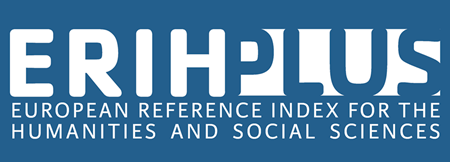POLYVECTORALITY OF CONTRAST IN THE HUMANITIES
DOI:
https://doi.org/10.32782/folium/2025.7.36Keywords:
contrast, humanities, opposition, polarity, binarity, antinomies, thesis, antithesis, synthesis, collision.Abstract
This article offers a systematic conceptualization of contrast as a structural, cognitive, and communicative mechanism operating within the framework of the humanities. The aim of the study is to reconstruct the historical development of contrast theory, trace its origins in various humanistic traditions, and examine the interdisciplinary dynamics of its perception and application. The paper considers a wide range of sources encompassing key directions in humanistic thought. Contrast is analyzed as a universal cognitive, logical, and phenomenological principle that spans all levels of the humanities: philosophy, logic, aesthetics, cognitive science, psychology, literature, and language. It is shown that contrast functions not merely as a stylistic device but also as a fundamental structure of thought, a tool of cognition, and an artistic principle. The focus is primarily on linguistic and speech phenomena. Several lines of inquiry in modern linguistics are identified: contrastive linguistics, which compares the structures of different languages; cognitive linguistics, which interprets opposition as a mode of conceptualization; and pragmatics and discourse analysis, where contrast is studied as a means of marking the informational structure of utterances. The methodological approaches used in the analysis of contrast include corpus-based methods (studying frequency and collocations in real texts), experimental methods (recognition and reaction testing), and typological methods (cross-linguistic comparisons). It is established that contrast serves as a tool for highlighting informationally significant elements in utterances, structuring texts, disrupting expectations, and creating stylistic tension. Through comprehensive analysis, the study concludes that contrast functions as a conceptual link between levels of linguistic organization and levels of world interpretation. The research perspective involves an in-depth analysis of the specifics of contrast functioning in various types of discourse – literary, scientific, journalistic, and conversational – taking into account linguistic, cultural, and genre variation. It is also important to expand corpus and experimental approaches to identify statistical patterns in the use of contrastive structures across languages and communicative contexts.
References
Арістотель (2013). Поетика. URL: https://chtyvo.org.ua/authors/Aristotle/Poetyka/
Кант, І. (2015). Критика чистого розуму. URL: https://chtyvo.org.ua/authors/Kant_Immanuel/Krytyka_chystoho_rozumu/
Ніцше, Ф. (2004). Повне зібрання творів. Том 1. Львів: Астролябія. 769 с.
Aristotle. (1938). The categories; On interpretation (H. P. Cooke & H. Tredennick, Trans.). Loeb Classical Library No. 325. Cambridge, MA: Harvard University Press. 367 p.
Augustine, of Hippo. (2009). The city of God (M. Dods, Trans.). Peabody, MA : Hendrickson Publishers. 894 p.
Baumgarten, A. G. (n.d.). Aesthetica. Frankfurt an der Oder: Johannes Christian Kleyb. U R L : h t t p s : / / a r c h i v e . o r g / d e t a i l s /aestheticascrip00baumgoog
Boethius. (2011). On Aristotle, On Interpretation 4–6 (A. Smith, Trans.). London : Bristol Classical Press. 184 p.
Derrida, J. (1976). Of Grammatology. Baltimore, MD: Johns Hopkins University Press. 448 p.
Fechner, G. T. (1966). Elements of Psychophysics (H. E. Adler, Trans.). New York: Holt, Rinehart & Winston. 336 p.
Fichte, J. G. (1992). Foundations of Transcendental Philosophy (Wissenschaftslehre nova methodo) (D. Breazeale, Trans.). Ithaca,
NY : Cornell University Press. 352 p.
Hegel, G.W.F. (1977). Phenomenology of Spirit (A. V. Miller, Trans.). Oxford: Oxford University Press. 640 p.
Heraclitus of Ephesus. (2006). Fragments. Whitefish, MT : Kessinger Publishing. 244 p.
Koffka, K. (1935). Principles of Gestalt Psychology. New York : Harcourt, Brace and Company. 720 p.
Köhler, W. (1929). Gestalt Psychology. New York : Liveright. 416 p.
Leibniz, G. W. (2020). Dissertation on Combinatorial Art (M. Mugnai, H. Van Ruler & M. Wilson, Eds. & Trans.). Oxford University Press. 307 p.
Priest, G. (2006). In Contradiction: A Study of the Transconsistent. Oxford : Oxford University Press. 292 p.
Van Dijk, T. A. (2019). Macrostructures (Psychology Library Editions: Personality Series, Vol. 16). London: Taylor & Francis Group. ISBN: 9780367112448. 328 с.
Weber, E. H. (1996). E. H. Weber on the Tactile Senses (H. E. Ross & D. J. Murray, Eds.). Hove, UK : Psychology Press. 312 p.
Wertheimer, M. (1923). Untersuchungen zur Lehre von der Gestalt, II. Laws of organization in perceptual forms. Psychologische Forschung,
(1), 301–350.












